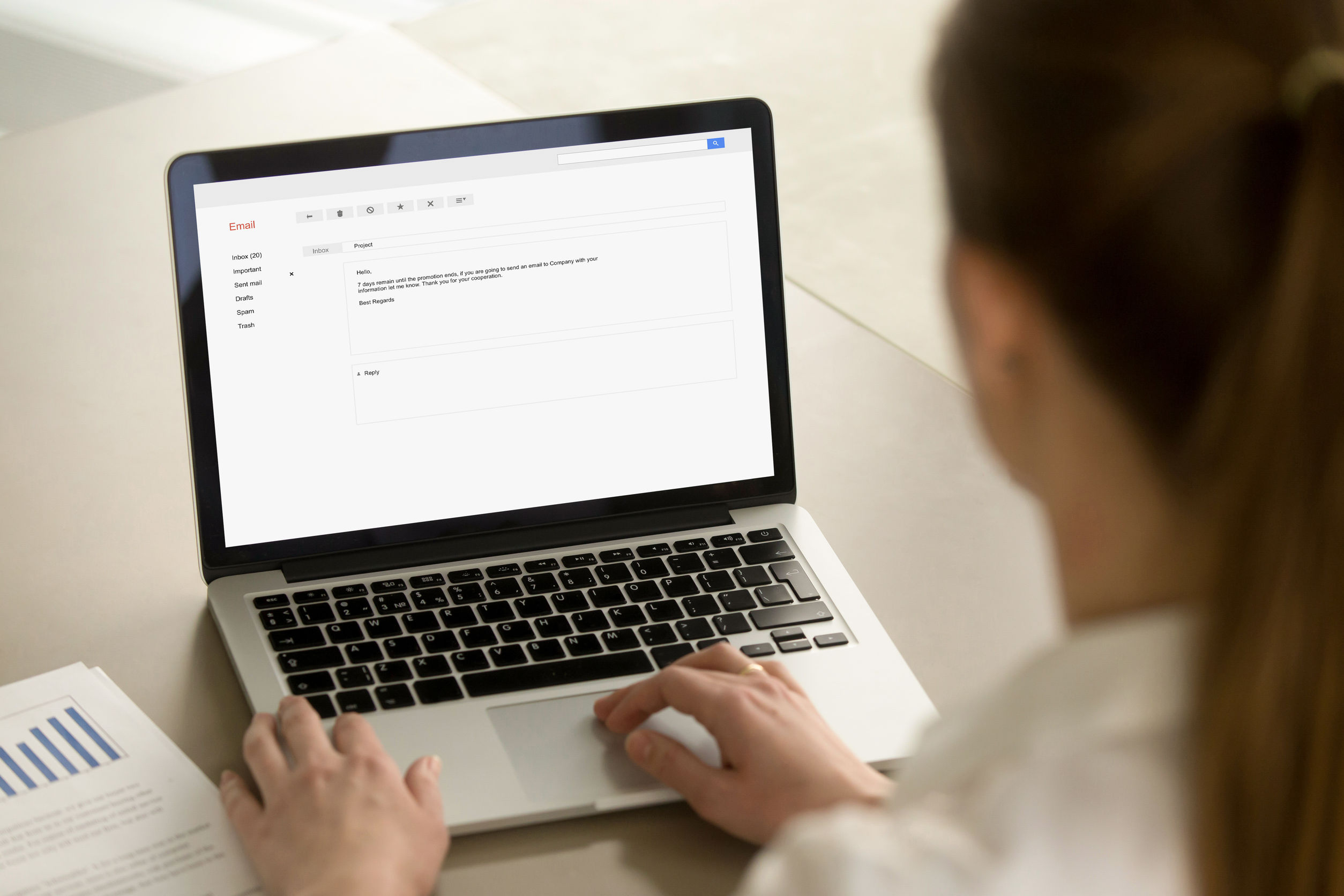
Photo credit: Aleksandr Davydov
This is the fourth newsletter based on the Over-Thinkers Guide to Working at Home Effectively. You can find the original guide here. Each week, we’ve written more information on one of the topics in the guide. This week’s virtual work topic is on the effective use of email.
Email is More Important Than Ever. Learn Four Tips to Make Your Emails More Effective
Our virtual work environment is creating a heavier-than-ever reliance on email. There’s no more walking around the corner to discuss an issue with a colleague. There is no longer a need to schedule an important meeting with someone who could make our work-life easier, as an email finding service (look here for more information) can give us all the contact details we need to do this from the comfort of our own desk. Our inclination is to just zip off a quick email. Zipping off an email is rarely a good idea and that’s even more true now. With fewer opportunities to connect in person, we rely on email even more. Now’s the time to learn tips that enhance your email writing skills. And, let’s face it, we need this skill no matter our work location.
Tip 1. Use clear language. We dash off a quick email without much thought. We type a response in the last minutes of the day or while rushing to the car. We send off instructions without rereading them. Then, we are perplexed that there is miscommunication. Email is not fast. It is crafted and careful.
- Remove ambiguous words. Words like “it,” “that,” “this,” “those,” and “them” leave room for ambiguity. Search for those words and replace them with the noun to which it/that/this/those/them refers.
- Assess acronyms. Will all readers understand the acronyms? If not, spell them out.
- Reread the email for clarity. Will someone less familiar with the situation understand the nuances? Since the reader can’t read your mind, how could the email be interpreted differently? Adjust your text to ensure clarity.
Tip 2. Structure for easy reading. Have you ever received a long email with big, rambling paragraphs? You feel overwhelmed before you start reading. Instead of rambling, structure the body of the email so that the reader isn’t intimidated. Plus, the structure allows you to cater to the communication styles of different people. Some want a summary; others need background. For important emails, you can provide both with good structure.
- Prioritize the messages. Start with the most important and work your way to the least important.
- Put the action step first. What action step do you want from the reader? Do you want their input on a big decision, participation on a doodle poll, or to send an update on the project status? And, when do you want their action? Make the action the first part of the email.
- Use bold, italics, underline and highlight to focus attention. Visually identify the key points or sections in the email using bold, italics, underline and highlight. These visual tools allow the reader to quickly skim the email and find the most important bits of information. I know…you don’t want them to “skim” the email. But they will. Make sure they pick up the key messages by making those points obvious to their eye.
- Provide a bulleted summary. Bulleted points are also useful to visually identify key points and provide white space in the email. White space gives the brain a break and allows it to more easily process information. The summary allows the person short on time to glean the information she requires immediately.
- Provide details below. Following the summary points, add detail for those who crave detail. Detail may include the background of the issue at hand, the research that supports the points, the factors that contribute to the decision. Providing details serves those who crave research and data and it documents the rationale behind your thinking.
- Reread the email for ease of reading. Before you hit Send, take another look at the email. For those who skim, can your eye easily pick out the main points? Is there a clear organizing structure?
Tip 3. Tone. Unless you are writing to someone you know well – very well – strike a professional tone. No sarcasm, no dry humor, no witty comeback as this writing style is heavily dependent on the readers’ interpretation. Plus, email is an official document. Always consider that someone else may read it. Be professional.
- Consider the reader. What tone do you “hear” in their emails? Is it light and friendly, serious, to the point, formal? Match that tone in your response. What do you know about the sender’s situation? If they have a sick child at home with COVID-19, that’s not the time for, “Hey! Don’t you love working from home!?!”
- Weigh the use of exclamation points. An exclamation point can convey lightheartedness (Are you as stir crazy as me?!). Sometimes I see an exclamation point used to convey urgency such as, “We need this proposal finished now!” Personally, I shy away from the latter as it comes across like yelling. If there is a problem with timely performance, that’s the time to pick up the phone.
- Prohibit emojis in a professional email. When in doubt, skip the emoji particularly if the email is to a key person (client, boss, elected leader) or the email will be shared widely. However, if the email is to a close friend or is unlikely to be shared with others, an emoji may be fine. (FYI. There is no consensus on the plural. It can be either emoji or emojis. I checked.)
- Reread the email for tone. Go back and read for tone. How does the language come across? Is it too cutesy, too stiff, too familiar, too businesslike? Is the tone appropriate for the receiver’s situation? If you don’t know his/her situation, tread even more carefully. Almost everyone is impacted in some way by the pandemic. Be sensitive to the possibility that all may not be well.
Tip 4. Details. Details matter with email. Have you ever hit Reply All when you meant to hit Reply? I’ve seen terrible situations result from a Reply/Reply All mistake. Take a few moments to scroll down to reread and recheck everything before hitting Send.
- Review the entire thread. Check the people and conversation on the entire email thread before you forward it. Otherwise, you risk sending information that was not intended for the bigger audience.
- Review all the names in the To and CC lines. Before hitting Reply All or Forward review the names on the receiving end. Are your comments and all comments throughout the chain appropriate for everyone on the email?
- Review for email overload. Think about the relevance of your message to everyone on the email. Do they all need to see your response? They do if: your comment adds substantive information to the conversation; you want others to see your participation; you want to register your agreement or disagreement with the group, They don’t if: there is no added value to the group (such as cc’ing everyone only to say “Thank you”); there is nothing in your response that furthers the discussion (such as “Received”). We all receive plenty of emails. Don’t copy everyone if it isn’t necessary.
- Reread the email for the details. It is no coincidence that each of these four tips concludes with “reread the email.” That practice is worth learning and using every day. Think of it this way. The time it takes to reread the email and make adjustments is small when compared to the time it takes to unravel a misunderstanding due to a poorly worded email.
We are in unusual times and everyone is adapting to the temporary situation. Even after the COVID-19 threat recedes, we will likely see an uptick in virtual work and the use of virtual meeting platforms. Be the manager who is on top of this shift and create the skills for you and your team to be both productive and connected. Learn effective email techniques. And, remember, email is not a fast-medium. To use it well requires thought.
Shelley Row, P.E. explains why NOW is probably the best time for technical managers to work on improving their leadership skills (and earn PDH credits!).
Registration & more info -> https://ilinstitute.teachable.com/






0 Comments